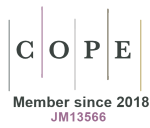Customization of hormone therapy in women with autosomal dominant polycystic kidney disease (ADPKD): actionable strategies and future perspectives
DOI:
https://doi.org/10.33393/gcnd.2024.3064Keywords:
ADPKD, Contraception, Female sexual hormones, Fertile age, Hormonal therapy, Menopause transition, Polycystic kidneyAbstract
Autosomal dominant polycystic kidney disease (ADPKD) is the most common genetically inherited kidney disease and the fourth leading cause of renal replacement therapy worldwide. It is characterized by the development of multiple cysts in the kidneys and in other organs, the increase in renal volume and the progressive loss of renal function. ADPKD outcome seems to be sensitive to hormonal fluctuations, particularly those of sex hormones. Despite the limited literature available, this review presents the first comprehensive overview of contraception and hormonal replacement therapy in women with ADPKD, delving into the risks and benefits associated with different contraceptive methods, including hormonal, intrauterine devices, and non-hormonal approaches. It also explores personalized strategies for contraception based on the severity of renal disease and the presence of comorbidities.
Although the protective role of female sex hormones in slowing the progression of renal failure is acknowledged, hormonal therapy in women with ADPKD remains intricate and challenging due to its potential impact on liver disease progression. Women with ADPKD typically experience a slower progression of renal disease compared to men, largely influenced by hormonal dynamics.
This literature review underscores the importance of a multidisciplinary assessment and a thorough patient discussion to identify the most suitable contraceptive method for each woman affected by polycystic kidney disease.
References
- Finnigan NA, Leslie SW. Polycystic Kidney Disease In Adults. 2023 Nov 4. In: StatPearls [Internet]. Treasure Island (FL): StatPearls Publishing; 2024 Jan. PMID: 29261941.
- Neugarten J, Acharya A, Silbiger SR. Effect of gender on the progression of nondiabetic renal disease: a meta-analysis. J Am Soc Nephrol. 2000;11(2):319-329. https://doi.org/10.1681/ASN.V112319 PMID:10665939 DOI: https://doi.org/10.1681/ASN.V112319
- Liu J, Fujikura K, Dev H, et al. Pericardial Effusion on MRI in Autosomal Dominant Polycystic Kidney Disease. J Clin Med. 2022;11(4):1127. https://doi.org/10.3390/jcm11041127 PMID:35207400 DOI: https://doi.org/10.3390/jcm11041127
- Harris PC, Torres VE. Polycystic Kidney Disease, Autosomal Dominant. 2002 Jan 10 [updated 2022 Sep 29]. In: Adam MP, Feldman J, Mirzaa GM, Pagon RA, Wallace SE, Bean LJH, Gripp KW, Amemiya A, editors. GeneReviews® [Internet]. Seattle (WA): University of Washington, Seattle; 1993–2024. PMID: 20301424.
- Coco D, Leanza S. Polycystic Kidney Disease and Polycystic Liver Disease Associated to Advanced Gastric Cancer: an External Complication of Potter III Disease. Maedica (Buchar). 2023;18(1):157-160. PMID:37266470 DOI: https://doi.org/10.26574/maedica.2023.18.1.157
- Sherstha R, McKinley C, Russ P, et al. Postmenopausal estrogen therapy selectively stimulates hepatic enlargement in women with autosomal dominant polycystic kidney disease. Hepatology. 1997;26(5):1282-1286. PMID:9362373 DOI: https://doi.org/10.1053/jhep.1997.v26.pm0009362373
- Chapman AB, Johnson AM, Gabow PA. Pregnancy outcome and its relationship to progression of renal failure in autosomal dominant polycystic kidney disease. J Am Soc Nephrol. 1994;5(5):1178-1185. https://doi.org/10.1681/ASN.V551178 PMID:7873727 DOI: https://doi.org/10.1681/ASN.V551178
- Hewitt SC, Korach KS. Progesterone action and responses in the alphaERKO mouse. Steroids. 2000;65(10-11):551-557. https://doi.org/10.1016/S0039-128X(00)00113-6 PMID:11108859 DOI: https://doi.org/10.1016/S0039-128X(00)00113-6
- Kolatorova L, Vitku J, Suchopar J, Hill M, Parizek A. Progesterone: A Steroid with Wide Range of Effects in Physiology as Well as Human Medicine. Int J Mol Sci. 2022;23(14):7989. https://doi.org/10.3390/ijms23147989 PMID:35887338 DOI: https://doi.org/10.3390/ijms23147989
- Yager JD, Davidson NE. Estrogen carcinogenesis in breast cancer. N Engl J Med. 2006;354(3):270-282. https://doi.org/10.1056/NEJMra050776 PMID:16421368 DOI: https://doi.org/10.1056/NEJMra050776
- Gava AL, Freitas FPS, Meyrelles SS, Silva IV, Graceli JB. Gender-dependent effects of aging on the kidney. Braz J Med Biol Res. 2011;44(9):905-913. https://doi.org/10.1590/S0100-879X2011007500101 PMID:21956533 DOI: https://doi.org/10.1590/S0100-879X2011007500101
- Xue B, Johnson AK, Hay M. Sex differences in angiotensin II- and aldosterone-induced hypertension: the central protective effects of estrogen. Am J Physiol Regul Integr Comp Physiol. 2013;305(5):R459-R463. https://doi.org/10.1152/ajpregu.00222.2013 PMID:23883676 DOI: https://doi.org/10.1152/ajpregu.00222.2013
- Komukai K, Mochizuki S, Yoshimura M. Gender and the renin-angiotensin-aldosterone system. Fundam Clin Pharmacol. 2010;24(6):687-698. https://doi.org/10.1111/j.1472-8206.2010.00854.x PMID:20608988 DOI: https://doi.org/10.1111/j.1472-8206.2010.00854.x
- Renke G, Kemen E, Scalabrin P, Braz C, Baesso T, Pereira MB. Cardio-Metabolic Health and HRT in Menopause: Novel Insights in Mitochondrial Biogenesis and RAAS. Curr Cardiol Rev. 2023;19(4):e060223213459. https://doi.org/10.2174/1573403X19666230206130205 PMID:36748220 DOI: https://doi.org/10.2174/1573403X19666230206130205
- O’Donnell E, Floras JS, Harvey PJ. Estrogen status and the renin angiotensin aldosterone system. Am J Physiol Regul Integr Comp Physiol. 2014;307(5):R498-R500. https://doi.org/10.1152/ajpregu.00182.2014 PMID:24944241 DOI: https://doi.org/10.1152/ajpregu.00182.2014
- Pechere-Bertschi A, Burnier M. Gonadal steroids, salt-sensitivity and renal function. Curr Opin Nephrol Hypertens. 2007;16(1):16-21. https://doi.org/10.1097/MNH.0b013e328011d7f6 PMID:17143066 DOI: https://doi.org/10.1097/MNH.0b013e328011d7f6
- Heller HJ, Sakhaee K, Moe OW, Pak CYC. Etiological role of estrogen status in renal stone formation. J Urol. 2002;168(5):1923-1927. https://doi.org/10.1016/S0022-5347(05)64264-4 PMID:12394677 DOI: https://doi.org/10.1016/S0022-5347(05)64264-4
- Conte C, Antonelli G, Melica ME, Tarocchi M, Romagnani P, Peired AJ. Role of Sex Hormones in Prevalent Kidney Diseases. Int J Mol Sci. 2023;24(9):8244. https://doi.org/10.3390/ijms24098244 PMID:37175947 DOI: https://doi.org/10.3390/ijms24098244
- Howard SA, Benhabbour SR. Non-Hormonal Contraception. J Clin Med. 2023;12(14):4791. https://doi.org/10.3390/jcm12144791 PMID:37510905 DOI: https://doi.org/10.3390/jcm12144791
- Bahamondes L, Fernandes A, Monteiro I, Bahamondes MV. Long-acting reversible contraceptive (LARCs) methods. Best Pract Res Clin Obstet Gynaecol. 2020;66:28-40. https://doi.org/10.1016/j.bpobgyn.2019.12.002 PMID:32014434 DOI: https://doi.org/10.1016/j.bpobgyn.2019.12.002
- Hubacher D, Chen PL, Park S. Side effects from the copper IUD: do they decrease over time? Contraception. 2009;79(5):356-362. https://doi.org/10.1016/j.contraception.2008.11.012 PMID:19341847 DOI: https://doi.org/10.1016/j.contraception.2008.11.012
- Horvath S, Schreiber CA, Sonalkar S. Contraception. 2018 Jan 17. In: Feingold KR, Anawalt B, Blackman MR, et al. Endotext [Internet]. South Dartmouth (MA): MDText.com, Inc.; 2000. PMID: 25905371.
- Hardeman J, Weiss BD. Intrauterine devices: an update. Am Fam Physician. 2014;89(6):445-450. PMID:24695563
- World Health Organization. Medical eligibility criteria for contraceptive use. 5th ed.; 2015. https://www.who.int/publications/i/item/9789241549158 (Accessed March 2024)
- RCOG/BSGE. Management of Endometrial Hyperplasia (Green-top Guideline No. 67). https://www.rcog.org.uk/guidance/browse-all-guidance/green-top-guidelines/management-of-endometrial-hyperplasia-green-top-guideline-no-67/ (Accessed March 2024)
- ACOG Practice Bulletin No. ACOG Practice Bulletin No. 121: Long-acting reversible contraception: Implants and intrauterine devices. Obstet Gynecol. 2011;118(1):184-196. https://doi.org/10.1097/AOG.0b013e318227f05e PMID:21691183 DOI: https://doi.org/10.1097/AOG.0b013e318227f05e
- Alhamdan D, Bignardi T, Hardas G, Merkur H, Condous G. Mirena intra-uterine system: does it improve long term symptoms in women with chronic pelvic pain and/or endometriosis after laparoscopy? A multicentre randomized controlled trial. Rev Recent Clin Trials. 2010;5(3):143-146. https://doi.org/10.2174/157488710792007301 PMID:20482495 DOI: https://doi.org/10.2174/157488710792007301
- Magalhaes J, Ferreira-Filho ES, Soares-Junior JM, Baracat EC. Uterine volume, menstrual patterns, and contraceptive outcomes in users of the levonorgestrel-releasing intrauterine system: A cohort study with a five-year follow-up. Eur J Obstet Gynecol Reprod Biol. 2022;276:56-62. https://doi.org/10.1016/j.ejogrb.2022.06.029 PMID:35809459 DOI: https://doi.org/10.1016/j.ejogrb.2022.06.029
- Bahamondes L, Petta CA, Fernandes A, Monteiro I. Use of the levonorgestrel-releasing intrauterine system in women with endometriosis, chronic pelvic pain and dysmenorrhea. Contraception. 2007;75(6)(suppl):S134-S139. https://doi.org/10.1016/j.contraception.2006.12.008 PMID:17531605 DOI: https://doi.org/10.1016/j.contraception.2006.12.008
- Kamani M, Akgor U, Gültekin M. Review of the literature on combined oral contraceptives and cancer. Ecancermedicalscience. 2022;16:1416. https://doi.org/10.3332/ecancer.2022.1416 PMID:36072240 DOI: https://doi.org/10.3332/ecancer.2022.1416
- Grimes DA, Jones LB, Lopez LM, Schulz KF. Oral contraceptives for functional ovarian cysts. In: Grimes DA, ed. Cochrane Database of Systematic Reviews. John Wiley & Sons, Ltd; 2009. https://doi.org/10.1002/14651858.CD006134.pub3 DOI: https://doi.org/10.1002/14651858.CD006134.pub3
- Barrionuevo P, Nabhan M, Altayar O, et al. Treatment Options for Hirsutism: A Systematic Review and Network Meta-Analysis. J Clin Endocrinol Metab. 2018;103(4):1258-1264. https://doi.org/10.1210/jc.2017-02052 PMID:29522176 DOI: https://doi.org/10.1210/jc.2017-02052
- Iversen L, Sivasubramaniam S, Lee AJ, Fielding S, Hannaford PC. Lifetime cancer risk and combined oral contraceptives: the Royal College of General Practitioners’ Oral Contraception Study. Am J Obstet Gynecol. 2017;216(6):580.e1-580.e9. https://doi.org/10.1016/j.ajog.2017.02.002 PMID:28188769 DOI: https://doi.org/10.1016/j.ajog.2017.02.002
- Dayal M, Barnhart KT. Noncontraceptive benefits and therapeutic uses of the oral contraceptive pill. Semin Reprod Med. 2001;19(4):295-303. https://doi.org/10.1055/s-2001-18637 PMID:11727171 DOI: https://doi.org/10.1055/s-2001-18637
- Ahrendt HJ, Karckt U, Pichl T, Mueller T, Ernst U. The effects of an oestrogen-free, desogestrel-containing oral contraceptive in women with cyclical symptoms: results from two studies on oestrogen-related symptoms and dysmenorrhoea. Eur J Contracept Reprod Health Care. 2007;12(4):354-361. https://doi.org/10.1080/13625180701536771 PMID:17853159 DOI: https://doi.org/10.1080/13625180701536771
- Harwood B, Mishell DR Jr. Contraceptive vaginal rings. Semin Reprod Med. 2001;19(4):381-390. https://doi.org/10.1055/s-2001-18646 PMID:11727180 DOI: https://doi.org/10.1055/s-2001-18646
- Madden T, Blumenthal P. Contraceptive vaginal ring. Clin Obstet Gynecol. 2007;50(4):878-885. https://doi.org/10.1097/GRF.0b013e318159c07e PMID:17982330 DOI: https://doi.org/10.1097/GRF.0b013e318159c07e
- Lete I, Dueñas JL, Esplugues JV, Marti-Cabrera M. Is the vagina an adequate route for the administration of hormonal contraceptives? Curr Drug Metab. 2010;11(10):839-849. https://doi.org/10.2174/138920010794479646 PMID:21208175 DOI: https://doi.org/10.2174/138920010794479646
- Milsom I, Korver T. Ovulation incidence with oral contraceptives: a literature review. J Fam Plann Reprod Health Care. 2008;34(4):237-246. https://doi.org/10.1783/147118908786000451 PMID:18854069 DOI: https://doi.org/10.1783/147118908786000451
- World Health Organization Collaborative Study of Cardiovascular Disease and Steroid Hormone Contraception. Cardiovascular disease and use of oral and injectable progestogen-only contraceptives and combined injectable contraceptives. Results of an international, multicenter, case-control study. Contraception. 1998;57(5):315-324. https://doi.org/10.1016/S0010-7824(98)00041-9 PMID:9673838 DOI: https://doi.org/10.1016/S0010-7824(98)00041-9
- Casper RF. Introduction: A focus on the medical management of endometriosis. Fertil Steril. 2017;107(3):521-522. https://doi.org/10.1016/j.fertnstert.2017.01.008 PMID:28259256 DOI: https://doi.org/10.1016/j.fertnstert.2017.01.008
- Spritzer PM, Motta AB, Sir-Petermann T, Diamanti-Kandarakis E. Novel strategies in the management of polycystic ovary syndrome. Minerva Endocrinol. 2015;40(3):195-212. PMID:25781065
- Cameron CR, Cohen S, Sewell K, Lee M. The Art of Hormone Replacement Therapy (HRT) in Menopause Management. J Pharm Pract. 2023 Apr 1:8971900231167925. https://doi.org/10.1177/08971900231167925 PMID:37002679 DOI: https://doi.org/10.1177/08971900231167925
- Management of osteoporosis in postmenopausal women: the 2021 position statement of The North American Menopause Society. Menopause. 2021;28(9):973-997. https://doi.org/10.1097/GME.0000000000001831 PMID:34448749 DOI: https://doi.org/10.1097/GME.0000000000001831
- de Villiers TJ, Hall JE, Pinkerton JV, et al. Revised Global Consensus Statement on Menopausal Hormone Therapy. Climacteric. 2016;19(4):313-315. https://doi.org/10.1080/13697137.2016.1196047 PMID:27322027 DOI: https://doi.org/10.1080/13697137.2016.1196047
- Langer RD. The evidence base for HRT: what can we believe? Climacteric. 2017;20(2):91-96. https://doi.org/10.1080/13697137.2017.1280251 PMID:28281363 DOI: https://doi.org/10.1080/13697137.2017.1280251
- Langer RD, Hodis HN, Lobo RA, Allison MA. Hormone replacement therapy - where are we now? Climacteric. 2021;24(1):3-10. https://doi.org/10.1080/13697137.2020.1851183 PMID:33403881 DOI: https://doi.org/10.1080/13697137.2020.1851183
- Nilsson S, Henriksson M, Berin E, Engblom D, Holm AS, Hammar M. Resistance training reduced luteinising hormone levels in postmenopausal women in a substudy of a randomised controlled clinical trial: A clue to how resistance training reduced vasomotor symptoms. PLoS One. 2022;17(5):e0267613. https://doi.org/10.1371/journal.pone.0267613 PMID:35617333 DOI: https://doi.org/10.1371/journal.pone.0267613
- Franco OH, Chowdhury R, Troup J, et al. Use of Plant-Based Therapies and Menopausal Symptoms: A Systematic Review and Meta-analysis. JAMA. 2016;315(23):2554-2563. https://doi.org/10.1001/jama.2016.8012 PMID:27327802 DOI: https://doi.org/10.1001/jama.2016.8012
- Johnson KA, Martin N, Nappi RE, et al. Efficacy and Safety of Fezolinetant in Moderate to Severe Vasomotor Symptoms Associated With Menopause: A Phase 3 RCT. J Clin Endocrinol Metab. 2023;108(8):1981-1997. https://doi.org/10.1210/clinem/dgad058 PMID:36734148 DOI: https://doi.org/10.1210/clinem/dgad058











